|
   |
|
Page 3 |
Newsletter 135 Winter 2021 © Hampshire Mills Group |
|
Gayle Mill, Wensleydale
Ruth Andrews
Photos by Ruth and Keith Andrews
|
|
Gayle Mill,
near Hawes in Wensleydale, is claimed to be the
oldest structurally unaltered cotton-spinning mill
in existence dating from 1776 when it was built by
landowners Oswald and Thomas Routh, under licence
from Richard Arkwright.
It was powered by a 22ft overshot waterwheel and
must have used Arkwright’s newly invented
technology. Before that, hand spinning was the
norm.
|
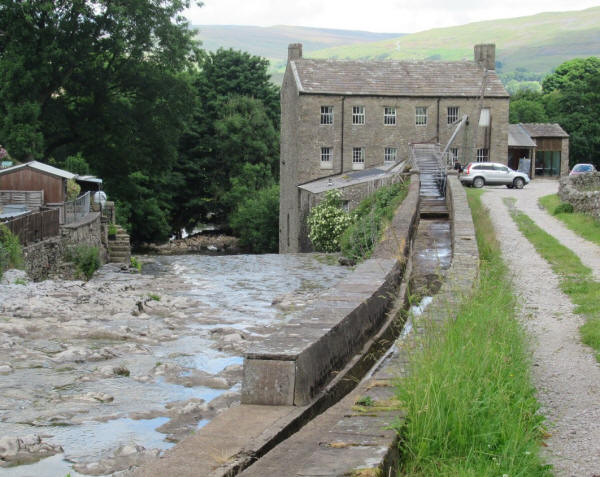 |
|
Its water
supply still occupies the original stone and timber
above-ground launder, which has always been the
site’s most striking feature when viewed from the
road bridge. The wooden section, seen here, must
have been mended many times!
|
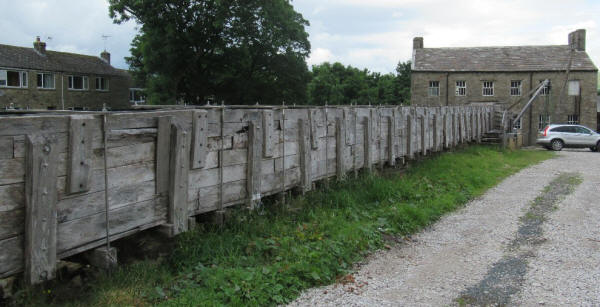
|
 |
Water levels
in the beck are often very low, as in this picture,
so there was a reservoir upstream (now filled in)
which would have been used to augment the flow of
the river. Below the bridge there is a weir which
directs water into the launder when the sluice is
opened.
|
|
The weir can
be seen more clearly in the middle of this picture.
Beyond are some of the village houses which were
supplied by electricity from the mill. The prominent
plant in the foreground is probably one of the many
confusing species of water dropwort.
|
 |
|
With the
advent of bigger and better mills and machinery,
cotton production became uncompetitive and so the
mill was converted in 1810 to flax which was used
for sails and sacking. When the flax industry
declined in the 1820s the mill was converted once
again, this time to wool spinning for the local
knitting industry. Wool ceased to be a profitable
commodity by the 1840s and production ceased; the
mill became a domestic property.
By the late
1800s the mill was once again converted, this time
for use as a sawmill.
|
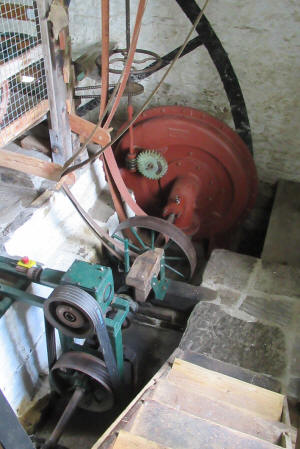 |
The
waterwheel was removed and replaced with a Thomson
double-vortex turbine, built by Williamsons (now
Gilbert Gilkes & Gordon Ltd) of Kendal. This is
thought to be the only remaining working variety of
its type. The turbine which generated 10hp (7.46kW)
drove a range of woodworking machinery – a rack
sawbench, circular saw, planer, and lathes – by a
series of belts and pulleys off a central line
shaft.
In 1919,
part of the mill was hired to provide electricity to
the area using the turbine to drive a generator. A
second turbine was installed in 1925. The mill
provided electricity for the village until 1948.
The sawmill operated until 1988 when it closed as a
business. A third turbine was installed in 2006 and
now generates electricity for the National Grid.
Fast forward
to 2004 when the mill appeared in the second series
of BBC2's Restoration programme, coming in the top
three in the national finals.
Restoration
of the grade 2* listed mill started in the same year
and works to bring the site to operational standard
took four years and cost over Ł1 million. Funding
for the renovation came from several sources
including the Heritage Lottery Fund, English
Heritage, and Yorkshire Forward.
|
|
The mill
re-opened to the public in 2008 for tours and
heritage skills training courses, with fully
restored machines and turbines. Members of Gayle
Mill Trust now open the mill and show people round.
When we
visited it was just opening up again following
further refurbishment work started in 2020 and then
Covid-19 restrictions, and we had an excellent tour
despite having to negotiate the wooden mill stairs
in facemasks!
Machinery
from the sawmill has been restored and is used by
the woodcraft studio on the second floor. These two
photos show a circular saw by T Robinson & Son,
Rochdale (who fitted out a lot of the early roller
mills), and a general view of the working area.
|
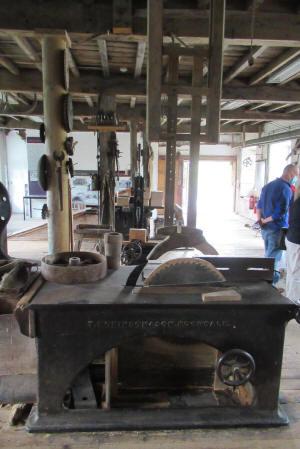 |
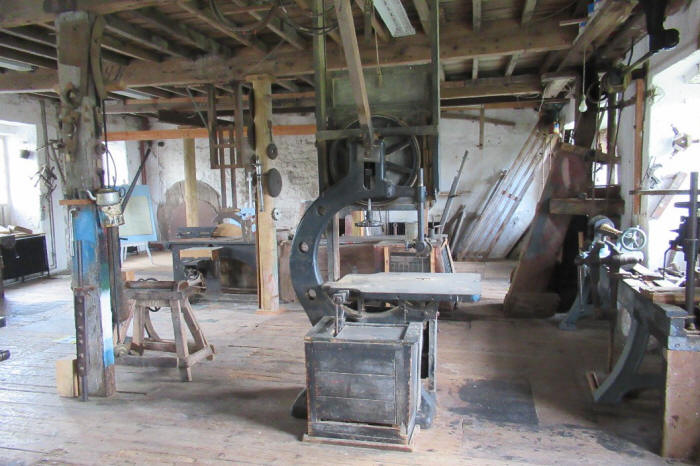 |
 |
On the
fourth storey the original floor is still preserved
below a modern floor, which provides a striking
contrast with the uneven window alcoves. It is
intended that this room can be used for meetings,
without worrying about damage to the historic floor.
|
|
|
